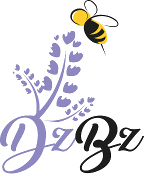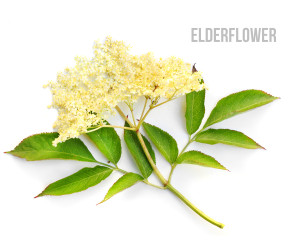Elderberry, or elder, has been used for centuries to treat
Wounds, when applied to the
Skin. It is also taken by mouth to treat
Respiratory illnesses such as cold and flu. Some evidence suggests that chemicals in elder flower and berries may help reduce
Swelling in mucous membranes, including the sinuses, and help relieve nasal
Congestion. Elder may have
Anti-inflammatory,
Antiviral, anti-
Influenza, and anti
Cancer properties.
Elderberry also contains flavonoids, which have
Antioxidant properties and may help prevent damage to the body's cells. In fact, elderberry outranks blueberries, cranberries, goji berries, and blackberries in terms of total flavonol content. However, few studies have been done in humans, so researchers don't know how effective elder may be.
There are several species of elder, but Sambucus nigra, or European elder (also called black elder), is most often used for medicinal purposes. Avoid dwarf elder (Sambucus ebulus), which can be toxic. Use a trusted preparation of elder because raw or unripe fruit, as well as the leaves, seeds, and bark, contain a chemical related to cyanide, which is
Poisonous.
Alternative Names: Elder; Elder flower
Plant Description: European elder is a large shrub or small tree that grows up to 30 feet tall in wet or dry soil in a sunny location. Elder is native to Europe, Africa, and parts of Asia, but it has become widespread in the United States. Deciduous leaves grow in opposite pairs and have 5 to 7 leaflets. Flowers are white and flat topped with 5 primary rays. Berries are green, turning red, then black when ripe.
Parts Used: The berries and flowers are used as medicine. Berries must be cooked before they are taken. Raw berries contain a chemical similar to cyanide.
Medicinal Uses and Indications
Colds and Flu: Elderberry may help treat cold and flu symptoms by reducing
Congestion and possibly making you sweat more. One study suggested that using a standardized elderberry extract, Sambucol, could shorten the duration of flu by about 3 days. Sambucol contains other herbs plus vitamin C, so no one knows whether elderberry by itself would have the same effect.
Another preliminary study found that a lozenge with elderberry extract (ViraBLOC) helped reduce flu symptoms when taken within 24 hours of symptoms starting. In the lab, one study suggested that elderberry could kill the H1N1
Virus ("swine flu") in test tubes, but researchers do not know whether it would be effective against H1N1 in people.
Bacterial
Sinusitis (Sinus
Infection): One study examined the use of a proprietary product, Sinupret, to treat
Bacterial
Sinusitis along with an
Antibiotic (doxycycline or vibramycin) and a
Decongestant. People who took the combination did better compared to those who did not take Sinupret. However, Sinupret contains other herbs along with elderberry, so no one knows whether taking elderberry alone would work as well.
Available Forms: Elderberry is available as a liquid, syrup, and tincture, as well as in capsule and lozenge forms. Dried elder flower is usually standardized to at least 0.8% flavonoids. Sambucol is standardized to 38% elderberry extract for adults and 19% for children. Sinupret contains 18 mg of elder flower.
How to Take It: Pediatric:DO NOT give elderberry or any product containing elder to a child without first talking to your pediatrician.
Adult: Sinupret: 2 tablets taken 3 times a day for
Bacterial
Sinusitis
Sambucol: 4 tbsp. a day for 3 days for
Colds and flu
Tea: Steep 3 to 5 g dried elder flower in 1 cup boiling water for 10 to 15 minutes. Strain and drink 3 times per day.
Precautions: The use of herbs is a time-honored approach to strengthening the body and treating disease. Herbs, however, can trigger side effects and interact with other herbs, supplements, or medications. For these reasons, you should take herbs only under the supervision of a health care provider.
DO NOT use unripe or uncooked elderberries. They may be
Poisonous.
Elderberry appears to have few side effects when used properly for short periods of time (up to 5 days).
Pregnant and breastfeeding women should not take elderberry.
If you have an
AutoImmune disease, such as rheumatoid
Arthritis or
Lupus, ask your doctor before taking elderberry, as it may stimulate the
Immune system.
Possible Interactions: If you are being treated with any of the following medications, you should talk to your health care provider before taking elderberry:
Diuretics (water pills).
Diuretics help the body get rid of excess fluid and increase the amount of urine your body makes. Elderberry may also act as a
Diuretic, so taking it along with a
Diuretic could make that drug stronger and raise your risk of dehydration.
Diuretics include:Hydrochlorothiazide Bumetanide (Burinex),Furosemide (Lasix)
Amiloride (Midamor),Metolazone Zaroxolyn)
Diabetes medications. Elderberry may lower
Blood Sugar levels. If you are also taking drugs for
Diabetes, taking elderberry may increase your risk of developing hypoglycemia, or low
Blood Sugar.
Chemotherapy. Elderberry may interact with some chemotherapy drugs. If you are undergoing chemotherapy, ask your oncologist before taking any herb or supplement.
Laxatives. Elderberry may act like a
Laxative and should not be taken at the same time as other
Laxatives.
Theophylline (TheoDur). Elderberry may reduce levels of theophylline, a drug taken for
Asthma and other
Respiratory conditions. That could make the drug not work as well.
Drugs that suppress the
Immune system. Because elderberry may stimulate the
Immune system, it could interfere with medications taken to suppress the
Immune system. These medications include corticosteroids (prednisone) and medications used to treat
AutoImmune diseases. People with organ transplants should also avoid elderberry.
Supporting Research
Gray AM, Abdel-Wahab YH, Flatt PR. The traditional plant treatment, Sambucus nigra (elder), exhibits insulin-like and insulin-releasing actions in vitro. J Nutr. 2000;130(1):15-20.
Kong F. Pilot clinical study on a proprietary elderberry extract: efficacy in addressing
Influenza symptoms. Online Journal of Pharmacology and Pharmacokinetics. 2009;5:32-43.
Mikulic-Petkovsek M, Slatnar A, Stampar F, Veberic R. HPLC-MSn identification and quantification of flavanol glycosides in 28 wild and cultivated berry species. Food Chem. 2012;135(4):2138-46.
Rakel: Integrative Medicine. 3rd ed. Philadelphia, PA: Elsevier Saunders; 2012.
Roschek B, Fink RC, McMichael MD, et al. Elderberry flavonoids bind to and prevent H1N1
Infection in vitro. Phytochemistry. 2009;70:1255-61.
Roxas M, Jurenka J.
Colds and
Influenza: a review of diagnosis and conventional, botanical, and
Nutritional considerations. Altern Med Rev. 2007 Mar;12(1):25-48. Review.
Swaminathan K, Dyason JC, Maggioni A, von Itzstein M, Downard KM. Binding of a natural anthocyanin inhibitor to
Influenza neuraminidase by mass spectrometry. Anal Bioanal Chem. 2013;405(20):6563-72.
Ulbricht C, Basch E, Cheung L, et al. An evidence-based systematic review of elderberry and elderflower(Sambucus nigra) by the Natural Standard Research Collaboration. J Diet Suppl. 2014;11(1):80-120.
Uncini Manganelli RE, Zaccaro L, Tomei PE.
Antiviral activity in vitro of Urtica dioica L., Parietaria diffusa M. et K. and Sambucus nigra L. J Ethnopharmacol. 2005 Apr 26;98(3):323-7.
Vlachojannis JE, Cameron M, Chrubasik S. A systematic review on the sambuci fructus effect and efficacy profiles. Phytother Res. 2010 Jan;24(1):1-8. Review.
Vlachojannis C, Zimmermann BF, Chrubasik-Hausmann S. Quantification of anthocyanins in elderberry and chokeberry dietary supplements. Phytother Res. 2015;29(4):561-5.
Wright CI, Van-Buren L, Kroner CI, Koning MM. Herbal medicines as
Diuretics: A review of the scientific evidence. J Ethnopharmacol. 2007 Oct 8;114(1):1-31.
Zakay-Rones Z, Thom E, Wollan T, Wadstein J. Randomized study of the efficacy and safety of oral elderberry extract in the treatment of
Influenza A and B
Virus Infections. J Int Med Res. 2004;32:132-40.
Version Info
Last reviewed on 2/2/2016
Steven D. Ehrlich, NMD, Solutions Acupuncture, a private practice specializing in complementary and alternative medicine, Phoenix, AZ. Review provided by VeriMed Healthcare Network.
*********
Dark purple elderberries (Sambucus nigra, S. Canadensis) are a fantastic ingredient for baked goods, jelly, pancakes, and homemade wine—you can even make a terrific fruit-flavored vinegar with them. They are also an anti-viral medicinal herb, taken either as a syrup or a tincture.
But, like most berries, they do not last long in the refrigerator or on the counter. If you've got an abundance of elderberries, freezing is a great way to preserve them for future use (or to stockpile them until you have enough for a recipe). It is also best to freeze elderberries before trying to de-stem them even if you plan to use them right away as it makes the process much easier.
How to Freeze Elderberries
Before placing the berries in the freezer, you need to follow a few steps. First, snip the whole elderberry clusters off of the shrubs, while they are still attached to their main stalks. Then rinse them under water to remove any
Insects or debris. Spread them on a dish towel to dry off for a few minutes, and then simply put the whole elderberry clusters into freezer bags or containers. Make sure to pack them in loosely so as not to crush any of the fruit. Seal the bag tightly and freeze.
Freezing to Ease the De-Stemming Process
The flowers and fruits are the only edible parts of the elderberry shrub—the leaves, twigs, roots, and stems are toxic. So before using the berries, you need to remove them from their stems. It is tricky to get the juicy berries off of the stems without squishing them, but once they are frozen, you can roll them off of the stems quite easily.
If you will de-stem the elderberries the same day as freezing them, spread them out on a cookie sheet and freeze, uncovered for one to two hours. Once they are frozen solid, they are quite easy to remove from the stems by hand. Discard the inedible stems and proceed with the recipe using the berries.
If you are not using the berries right away, transfer the de-stemmed elderberries to freezer bags or containers; seal tightly and return them to the freezer.
Working With a Big Bunch
If you are working with a very large haul of elderberries, you may find that they start to thaw out quicker than you can de-stem them. To avoid this, work in smaller batches, only taking a few of the still-on-the-stem elderberry clusters out of the freezer at a time.
When you work with elderberries in a large quantity, it is also helpful to return the just-stemmed, still-frozen elderberries to the freezer quickly. If they have already thawed when you refreeze them, the result will be a big solid brick of fruit. If they are still frozen, the individual elderberries will stay loose in their containers or bags. That makes it easier to take out just what you need when you are ready to use them in a recip
https://www.thespruceeats.com/the-best-way-to-freeze-elderberries-1327670


